| Name | Jensen Capsule Polisher |
| Lead Time | Lead time advised within 48 hours of order placement. |
| Competitor | ;OP0902113;OP0902-113;OP2071;OP2071001;OP2071-001;K74920;K7-4920;K74921;K7-4921;601146;60-1146;6011-46;OP0902111;OP0902-111;601147;60-1147;6011-47;6011-46_6011-47; |
| Specialty | Ophthalmology-Cannulas |
| Material Finish | Stainless Steel |
| Grade | Premium Operating Room |
| Units of Measurement | Each |
| Manufacturer | King Plus Surgical Industry |
| Sterility | Non-Sterile |
| Usage | Reusable |
Jensen Capsule Polisher
tip flattened, 19-gauge Jensen Capsule Polisher is a useful tool in cataract procedures. The polisher is used to remove opacity on the posterior capsule leading to improved surgical outcome. The diamond dusted tip is delicate enough to prevent rupture of the capsule. Two sizes are available with the polisher depending on surgical preference.
SKU:
KPS-05-1051
Category: Cannulas
Description
Reviews (0)
Be the first to review “Jensen Capsule Polisher” Cancel reply
Shipping & Delivery
Related products
Lieppman Cystotome
w/ guard, 22-gauge, 2" (5.0 cm)Lieppman Cystotome is a commonly used tool during cataract phacoemulsification procedures. The cystotome may be used to create a circular incision in the anterior capsule before proceeding with aspiration of the lens. The tool features a guard to prevent extraneous damage to the surrounding iris or globe tissue.
Gimbel Irrigating Cannula
30 gauge u-tip, overall length 28.0 mm (excluding hub)Gimbel Irrigating Cannula is a useful tool during cataract and IOL implantation procedures. The cannula may be used to perfuse fluid for easier manipulation of the IOL or easier access to debride nuclear fragments. The ultra-small gauge facilitates entrance into the lens capsule.
Gills-Welsh Cannula
25-gauge, angled Gills-Welsh Cannula is a commonly used tool in cataract and various other ophthalmologic procedures. The small gauge of the cannula may be used to aspirate fluid in the anterior chamber of the eye following a limbal incision. Four different angles are available with the cannula depending on surgical preference.
Bailey Lacrimal Cannula
reinforced shaft, 23-gauge, 1/2" (1.5 cm) Bailey Cannula is an extremely useful tool in treating tear duct obstructions. The cannula may be used to investigate blockage of lacrimal gland damage or more frequently, obstruction of the nasolacrimal duct. The cannula features a reinforced shaft to prevent bending and kinking during the procedure, while the shorter working length affords the surgeon more control.
Kratz Capsule Scraper
shaft w/ sharp top, shaft angled 60 degrees, 12.0 mm tip from angle to tip, 22-gauge, 1/2" Kratz Capusle Scraper is a useful tool in phacoemulsification procedures. The sandblasted tip is designed to scrape the surface of the posterior capsule to remove and cellular debris following aspiration of the nucleus.
Randolph Cyclodialysis Cannula
front air injection port, 12.0 mm angled tip, 19-gauge Randolph Cyclodialysis Cannula is a commonly used tool in glaucoma procedures. The cannula is frequently used to irrigate the anterior chamber once a communication has been established between the anterior chamber and the suprachoroidial space. The cannula has a front injection air port and features a flat tip or thin spatula blade depending on surgical preference.
Bracken Anterior Chamber Cannula
curved, 19-gauge, overall length excluding hub 13/16" (2.1 cm) Bracken Anterior Chamber Cannula is a frequently used tool in cataract extraction procedures. The small gauge cannula is nimble enough to fit into a small limbal incision accessing the anterior chamber. It may be used to aspirate fluid within the anterior chamber exposing the lens capsule. The curved nature of the shaft assures minimal surgical obstruction.
Maumenee Vitreous Aspirating Needle
blunt tip w/ markings, 5.0 mm, 10.0 mm & 15.0 mm, 18-gauge Maumenee Vitreous Aspirating Needle is a commonly used tool in retinal ophthalmologic procedures. The needle features a large gauge designed for the aspiration of the viscous vitreous fluid following retinal detachment or increased pressure. In addition, markings on the gauge aid the physician in navigation of the tool.

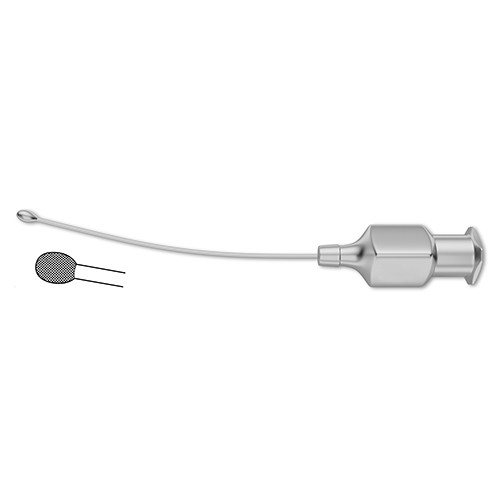
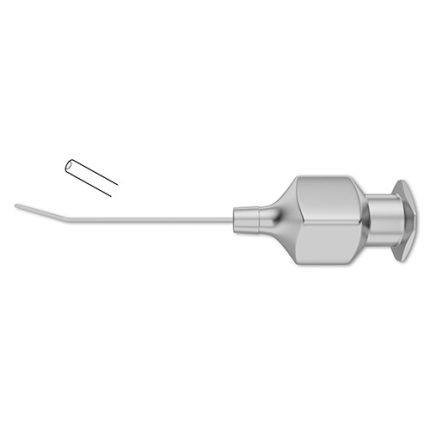
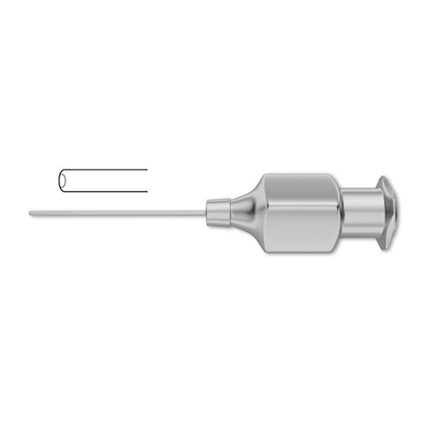

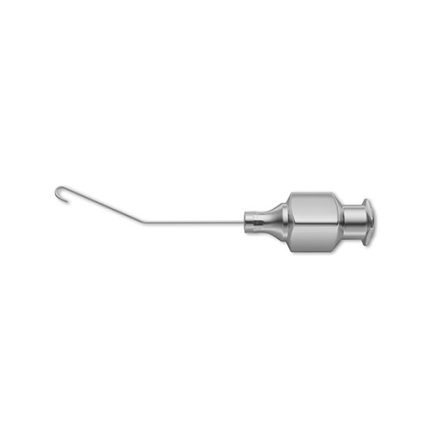
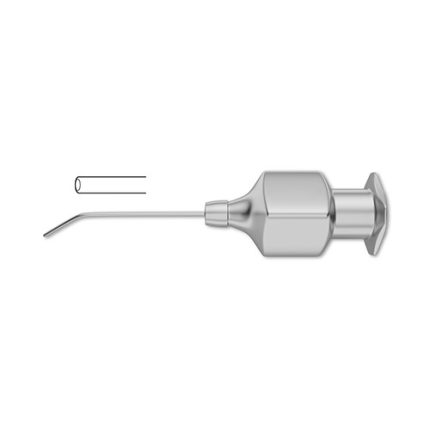
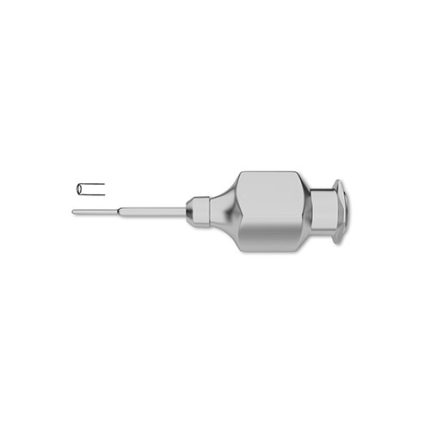
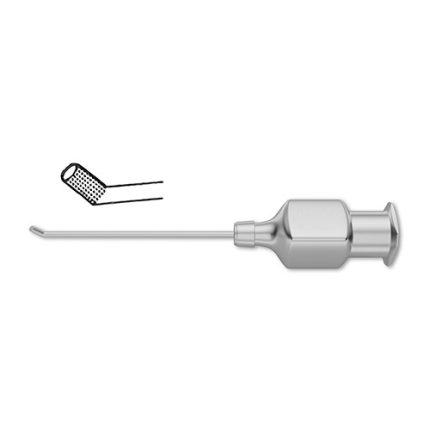
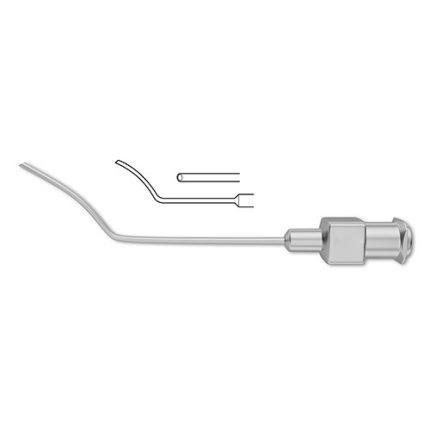
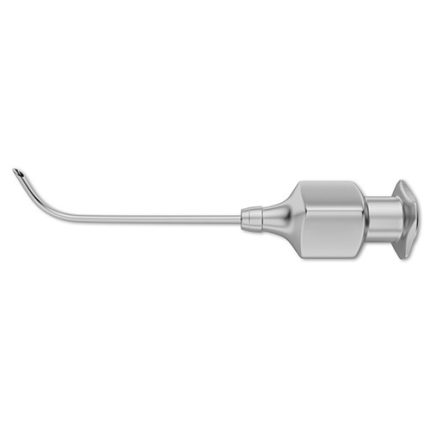
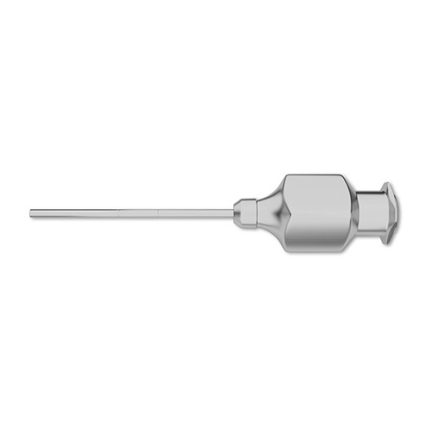
Reviews
There are no reviews yet.